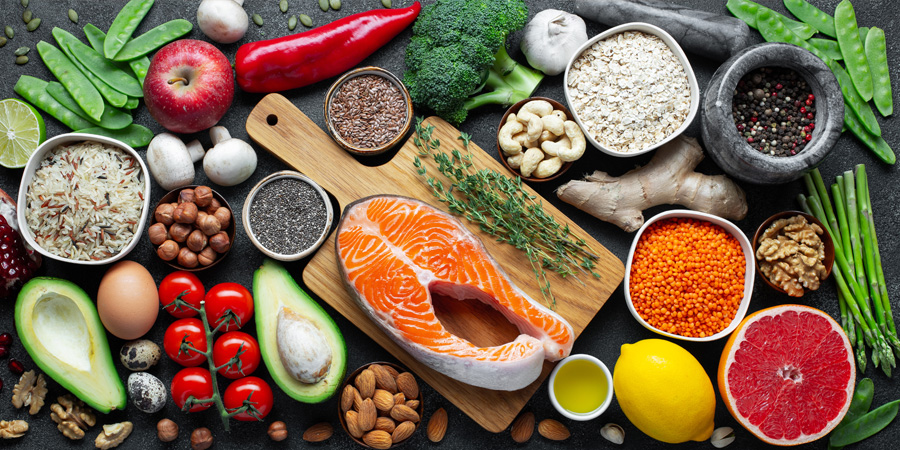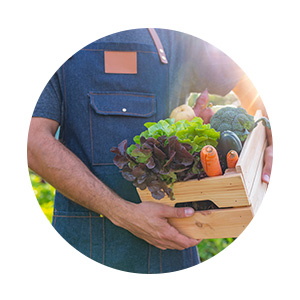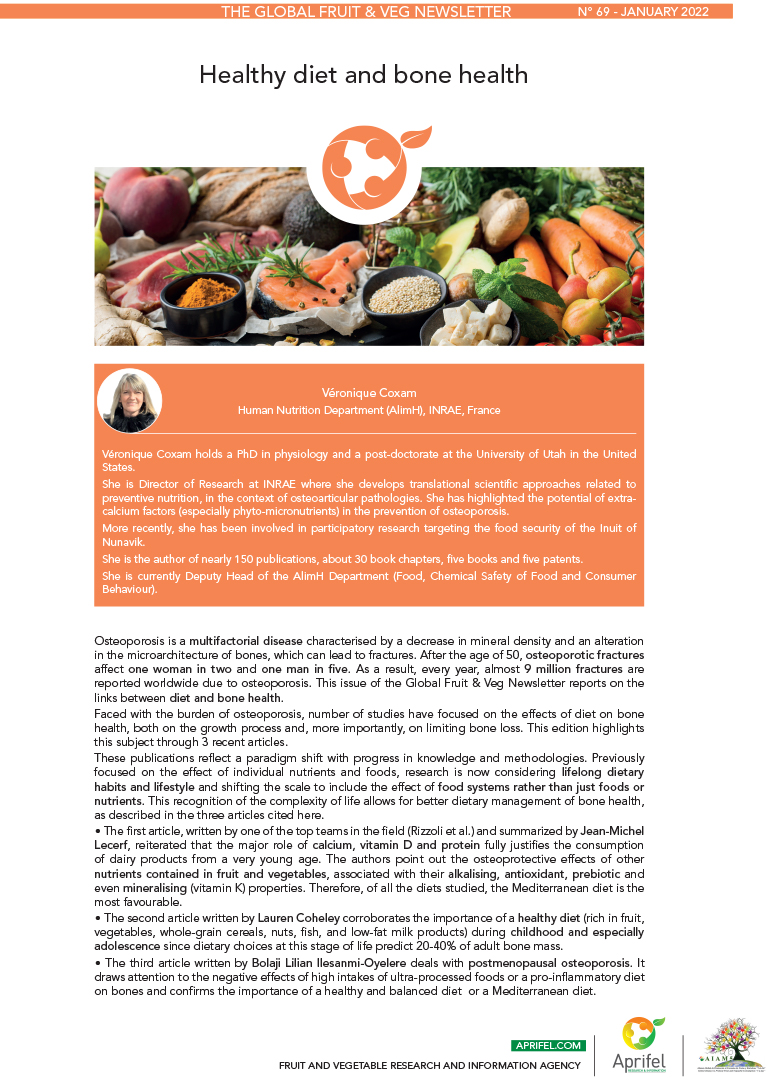Scientific news
Discover five recent scientific articles from our food, health and sustainability watch.


With more than 18 million cases and 10 million deaths worldwide in 2020, cancer is one of the most important public health problems. Therefore, identifying the risk and prospective factors for this disease is of major importance.A review of 110 articles examined the results of the EPIC study on the relationship between diet and mortality from the four most common cancers in Europe (colorectal, breast, lung and prostate). Fruit and vegetables consumption was found to be protective against colorectal, breast and lung cancer, while only fruit consumption was found to protect against prostate cancer. The Mediterranean diet is also identified as a preventive factor against colorectal and breast cancer. These results are in line with the latest data on cancer prevention.

The American programme “Read for Nutrition” seeks to improve children’s liking and consumption of vegetables through reading. In this study, 16 teachers were trained and then asked to read the book “Monsters Don’t Eat Broccoli” to children (n=69; 3-5 years old) repeatedly over a 3-week period. Following this intervention, the average consumption of broccoli increased by 35% in all children.A better appreciation of broccoli was also observed. The proportion of children who rated it as “Yummy” increased from 44% to 61% after the intervention. Conversely, the proportion of children who rated it as ‘Just OK’ or ‘Yucky’ decreased. The teachers found the programme acceptable, practical and enjoyable to children and to themselves.

A Norwegian study assessed the association between students’ physical education grades, their vegetable consumption and their level of well-being using the 5C indicators : competence, confidence, character, caring, and connection. Participants (220 students, 17-year-old) self-reported their current academic grade in physical eduation on a scale of 1 to 6, with grade 1 representing minimal knowledge and investment during physical education sessions. A high physical education grade was positively associated with four of the five indicators. Moreover, a unit increase in the physical education grade increased the likelihood of engaging in physical activity by 94% and vegetable consumption by 68%. These significant results highlight the need for policies and programmes to support physical education classes.

Isothycyanates, bioactive compounds found in cruciferous vegetables, are known for their chemopreventive activity. A literature review analyzed over 410 articles to clarify the health benefits of cruciferous vegetables and isothiocyanates. According to this work, cruciferous vegetables consumption reduces the risk of all-cause mortality, cancer and depression.A 10% risk of all-cause mortality was observed for a 100 g increased daily consumption of cruciferous vegetables. Finally, the authors warn that warfarin resistance may be caused by broccoli due to its high vitamin K content and point out the existence of allergy/hypersensitivity to crucifers.

Sustainable diet is an increasingly studied field of research, with knowledge evolving rapidly. Nutrition educators are important relays for informing consumers on this issue. However, to date, no evidence-based recommendations exist for these professionals. This American review summarizes the most recent scientific data and identifies five recommendations: 1/Shift towards a plant-based diet; 2/Mitigate food waste; 3/Limit consumption of ultra-processed foods; 4/ Engage in local food systems; 5/Choose sustainable seafood. The authors provide examples for each of these recommendations to facilitate their implementation in the United States.

